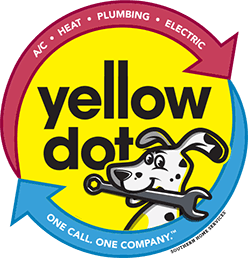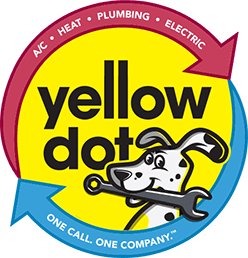When temperatures plummet, most of us retreat inside for warmth. But with the increasing costs of home heating fuels and utilities, people are hunting for alternate sources for home heating.
ALTERNATIVE HEATING SOLUTIONS
The use of fireplaces and space heaters are ideal solutions. However, they sometimes factor in residential fires. Luckily, many of these fires can be prevented by adhering to these quality safety tips.
SAFETY TIPS FOR KEROSENE HEATERS
- Your heater needs to be in good working condition. Take a look at the exhaust parts for carbon buildup. Take the steps necessary so the heater has an emergency shut off in case it is tipped over.
- Never use fuel-burning appliances without quality room venting. Burning fuel (coal, kerosene or propane, for example) can generate deadly fumes.
- ONLY use the fuel suggested by the heater manufacturer. NEVER utilize a fuel into a unit not designed for that type of fuel.
- Keep kerosene, or other flammable liquids, safe in appropriate metal containers, in well-ventilated storage areas away from the house.
- NEVER refill the heater while it is working or hot. When refueling an oil or kerosene heater, watch out for overfilling. DO NOT use cold fuel ,as it might expand in the tank as it warms up.
- Refueling is best done outside of the home. Keep young children back from space heaters—particularly when they are wearing loose clothing that can be easily ignited.
- When using a fuel-burning appliance in the bedroom, ensure there is enough ventilation to prevent a buildup of carbon monoxide.
SAFETY TIPS FOR WOOD STOVES AND FIREPLACES
- Ensure your fireplace or stove is installed properly, is in proper working shape, and is of good quality and durable construction and design.
- Wood stoves should have adequate clearance (36”) from flammable surfaces and well-constructed floor support and protection.
- Have the chimney checked annually and cleaned if required, especially if it has not been used for some time.
- Do not use flammable liquids to spark or accelerate any fire.
- Keep a glass or metal screen within the fireplace opening to prevent embers or sparks from jumping out, hazardous material from going in, and help reduce the potential of burns to occupants.
- The stove should be burned hot twice a day for 1530 minutes to lower the amount of creosote buildup.
- Don’t use excessive amounts of paper to start roaring fires in fireplaces. It is possible to ignite creosote in the chimney by overbuilding the fire.
- Never use charcoal indoors. Burning charcoal can produce lethal amounts of carbon monoxide.
- Keep flammable materials a safe distance from your fireplace mantle. A spark from the fireplace could quickly ignite these materials.
- Before you go to bed, make sure your fireplace fire is out. NEVER shut your damper with burning ashes in the fireplace.
- A sealed damper will help the fire to heat up again and will allow toxic carbon monoxide into the house.
- If artificial logs are used, adhere to the directions on the package. NEVER break a synthetic log apart to encourage the fire or use more than one log at a time. They frequently burn unevenly, releasing higher levels of carbon monoxide.
- Inspect the flue pipe and pipe seams. Are they well supported and free of holes and cracks? Soot on or around seams could be evidence of a leak.
- Check the chimney for any cracks or loose bricks and have a certified professional take care of any found.
- All unused flue openings should be sealed with solid masonry.
SAFETY TIPS FOR FURNACE HEATING
- It is crucial that you have your furnace inspected at the start of each winter season to be sure that it is in good working order.
- Be sure all furnace controls and emergency shutoffs are in proper working condition.
- Leave furnace repairs to certified professionals. Do not attempt repairs without any help.
- Inspect the walls and ceiling near the furnace and along the chimney line. If the wall is hot or discolored, more pipe insulation or clearance may be needed.
- Keep trash and other combustibles away from the heating system.
OTHER FIRE SAFETY TIPS:
- Never discard hot ashes inside or near the home. Store them in a metal container outside and well away from the house.
- Never use a range or an oven as a supplemental heating device. Not only is it a safety matter, but it also could be a source of potentially toxic fumes.
- If you use an electric heater, be sure not to overload the circuit. Only use extension cords that have the necessary rating to carry an amp load.
- TIP: Pick an extension cord the same size or larger than the appliance electrical cord.
- Avoid using electrical space heaters in bathrooms or other areas where they may come in contact with water.
- If your water pipes have frozen, NEVER try to thaw them with a blowtorch or other open flame. The pipe could conduct the heat and ignite the wall structure within the wall space. Instead use hot water or a device like a handheld dryer for thawing.
- If windows are used as emergency exits in your home, practice using them in the event fire should appear. Make sure that all the windows open quickly. Home escape ladders are useful.
- If there is a fire hydrant near your home you can assist the fire department by keeping the hydrant free of snow so in the event it is needed, it can be found.
- Be sure every level of your home has a working smoke alarm, and be sure to check and clean it each month.
- Create and practice a home escape plan with your family.
- Contact your local fire department for suggestions if you have a question on home fire safety

